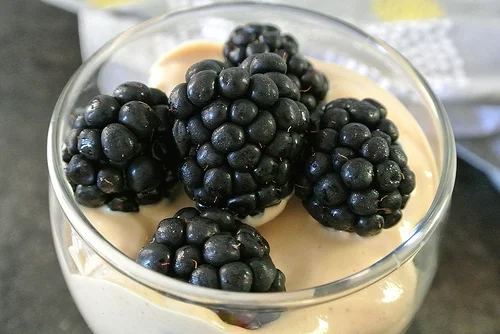Hey, welcome. Consider following us on Twitter and subscribing to our RSS feed, or sign up for email updates from the Home Page.
Where there's smoke there's fire. In this case, a pile of smoked paprika pureed into filling sweet potatoes paired with nourishing, creamy white beans slow-cooked with jalapeno and herbs. (And really, you'll overcook the beans a bit to ensure a very creamy finished product.) Throw in a little tomatillo for brightness, and you have one seriously satisfying dinner. Plus, leftover burritos make great next-day breakfasts or lunches, too. We suggest you garnish these with fresh cilantro and gently briny black olives (hit a grocer's antipasto bar to buy only as many as you need--they're much better than canned) to balance out the sweet potatoes, but you can keep these as simple (or stuffed) as you like. And if you can stand a little more heat, a vinegary hot sauce will finish these off nicely.
The white beans will be fairly fiery alone, but know that the heat does mellow a bit when combined with all the starch of the potatoes and the tortilla. If you're sensitive to heat, remove the seeds from the jalapeno, or try replacing it with half of a small poblano for a milder dish.
And finally, the baking isn't necessary if you're in a hurry, but we always bake our burritos to toast the tortillas and help the flavors mingle.
Spicy and Smoky White Bean-Tomatillo-Sweet Potato Burritos
yields 6 medium burritos
8 oz dried navy beans, soaked 8 hours
1 medium jalapeno, thinly sliced
1 dried bay leaf
1 tsp dried oregano
1/2 tsp onion powder
1/2 tsp liquid smoke
1 1/2 cups water
1/2 tsp fine sea or kosher salt
1 lb (1 very large) sweet potato, scrubbed and cut into 1-inch dice
4 oz (a few small-medium) tomatillos, husks removed
1 tsp smoked paprika
1/4 tsp fine sea or kosher salt
6 8-inch flour tortillas
sliced black olives (optional)
freshly chopped cilantro (optional)
vinegar-based hot sauce, such as Cholula brand (optional)
Add the soaked beans, jalapeno, bay leaf, oregano, onion powder, liquid smoke, and water to a slow cooker. Cover and cook on low for 8 hours, until very tender and creamy. Remove bay leaf, stir in 1/2 tsp salt, turn off heat, and let sit with the lid cocked while you prepare the rest of the recipe (the beans will thicken a bit as they stand).
Add the diced sweet potatoes to a pot of water and bring to a boil. Reduce heat, maintaining a steady boil, and cook until very tender, about 20 minutes.
Meanwhile, heat a medium pot of water while you wash the tomatillos. When the water boils, carefully add the tomatillos and boil 3-4 minutes, until they turn from brilliant lime to a darker olive color. Carefully remove with a slotted spoon and transfer to a food processor. Pulse until broken down and saucy. Scrape the food processor out well (no need to wash it) and set the tomatillos aside.
Preheat the oven to 375.
When the potatoes are ready, drain and add them to the food processor. Add about 1 cup of the white beans (they should now be a little saucy, but not drowning--if you have a lot of extra water, drain them), the smoked paprika, and 1/4 tsp salt. Puree until very smooth, scraping down the sides as needed. Stir the tomatillos into the remaining beans.
Heat the tortillas (steaming for about 15 seconds each, as you go, works best for us) and assemble the burritos using about 1/3 cup each of the potato and bean-tomatillo mixtures (the potatoes, you may use slightly more than 1/3 cup, the beans, just a bit less), plus garnishes, if using. Roll up and place seam-side down in a baking dish. Bake until hot and a bit crisped, especially at the ends, about 25 minutes.
Serve with hot sauce, if desired.






























































